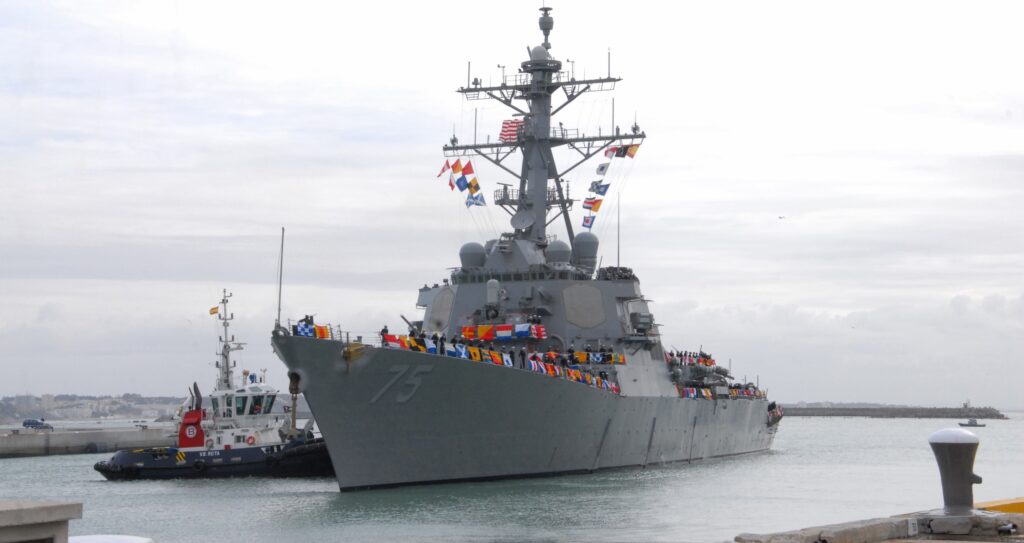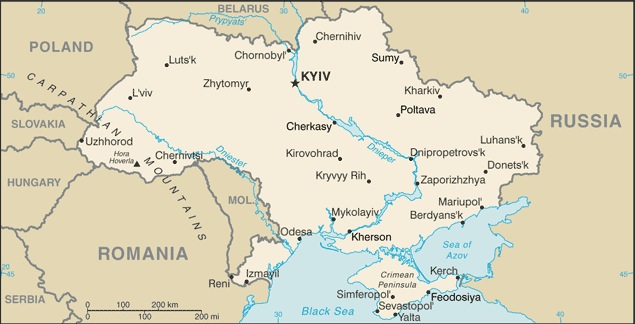The Ukrainian crisis created by Russia’s aggressive adventurism has sparked much soul-searching among NATO’s commanders, western lawmakers and policymakers and the western defense world’s thinkerati. Should we bolster missile defenses in central Europe? What about the permanent US military presence in Europe? Has it gotten too small? Do we need to bolster America’s nuclear forces, as professor Adam Lowther at the Air Force Research Institute argued in our pages recently. Tom Collina, a respected expert in nuclear weapons and arms control, thinks Lowther is on the wrong track. Read on. The Editor.
It is no surprise that Russia’s takeover of Crimea is being met with calls by some to build up U.S. nuclear forces and accelerate missile defense deployments in Europe. But cooler heads will realize that such throwbacks to the Cold War past are not the answer.
As Australia’s former foreign minister Gareth Evans wrote recently: “Nuclear-weapons enthusiasts seem to have an inexhaustible appetite for bad arguments.”
Make no mistake: The United States and its NATO allies must make it clear to Russia that pushing further into Ukraine would be a terrible blunder. So far, the West has responded to Russia’s land grab with sanctions against Moscow, economic aid to Ukraine and conventional military support to NATO’s eastern members. Further aggression by Russia would be met with stronger sanctions and other measures.

USS Donald Cook, Arleigh Burke-class guided missile destroyer, heads to the Black Sea to “reassure” NATO allies and Black Sea governments.
Nuclear weapons and missile defenses have not been part of the West’s response, for good reason. The United States already has a larger deployed strategic nuclear arsenal than Russia’s, and Washington is already planning to maintain and modernize its “triad” of nuclear-armed submarines, missiles and bombers, to the tune of about $355 billion over the next decade.
If a superior U.S. nuclear force did not restrain Moscow from annexing Crimea, how would an even larger force stop further Russian adventurism? It would not. The paradox of nuclear weapons is that they are too destructive to be used, so both sides are “deterred” from doing so. As Secretary of State John Foster Dulles famously said in the 1950s, if the United States were to use nuclear weapons, “we’d be finished as far as present-day world opinion was concerned.”
On missile defense, the U.S. systems in the ground and on the drawing board are not aimed at Russia and never have been. They are intended to counter limited missile threats from North Korea and Iran. There should be no partisan disagreement on this point. Like the Obama administration, the Bush administration also had its missile defense sights on developing threats, not Moscow.
As then-Secretary of State Condoleezza Rice said in 2008 about the Bush administration’s missile defense plan for Europe, “I frankly think that anybody who can do the math would know that 10 interceptors in Poland is not going to do anything to a Russian deterrent that has thousands of warheads.”
Accelerating planned deployments of SM-3 interceptors in Romania and Poland to counter Russia would therefore be all bark and no bite. It would do nothing to reduce the Russian threat and would likely give Moscow reason to move Iskander short-range missiles closer to NATO, as it has threatened to do.
So let’s not kid ourselves into thinking that spending more money on nuclear weapons and missile defenses will somehow convince Russian President Vladimir Putin to pack up his military forces in Crimea and bring them home. It won’t.
However, at a time of increasingly tight budgets, the more we spend on excess nuclear weapons the less will be available for what Ukraine and NATO need most: economic aid and conventional military assistance.
Defense Secretary Chuck Hagel warned recently that “tough, tough choices are coming” if the Pentagon is forced to make deep spending cuts, as required by law. He may slash about 30,000 soldiers and retire an aircraft carrier. Yet he is increasing spending on nuclear weapons.
As Crimea shows, these priorities are backwards. We must not allow our increasingly important conventional military forces to be undercut by excessive investments in nuclear weapons.
And we don’t have to. The United States can stay at nuclear warhead levels set by the 2010 New START treaty and still save billions over the next decade by scaling back and delaying new delivery systems.
The Pentagon will need those billions. The defense budget still needs to be cut by $115 billion from 2016-2019 to meet sequester targets, or about $29 billion per year on average. And as much as Hagel wants Congress to change the law, that is not likely.
Rep. Buck McKeon, House Armed Services Committee chairman, said recently that, “I don’t see any way that [sequester] is going away right now.”
Rather than looking to the past for answers to today’s challenges, we need to think smarter. Bulking up on nuclear weapons and missile defenses will not deter Russia, but would only add to already high tensions, and could take scarce resources away from what Ukraine and NATO really need.
Tom Collina is research director at the non-partisan Arms Control Association. CORRECTED: Author’s name to Tom Collina. April 11 1:47 pm
Norway’s top officer on his ‘biggest challenge,’ next frigate and new NATO neighbors
Gen. Eirik Kristoffersen, Norway’s Chief of Defense, talks to Breaking Defense about his plans for spending on new frigates and subs, the challenges of upgrading Norway’s “digital backbone” and refilling the military’s stocks.



























